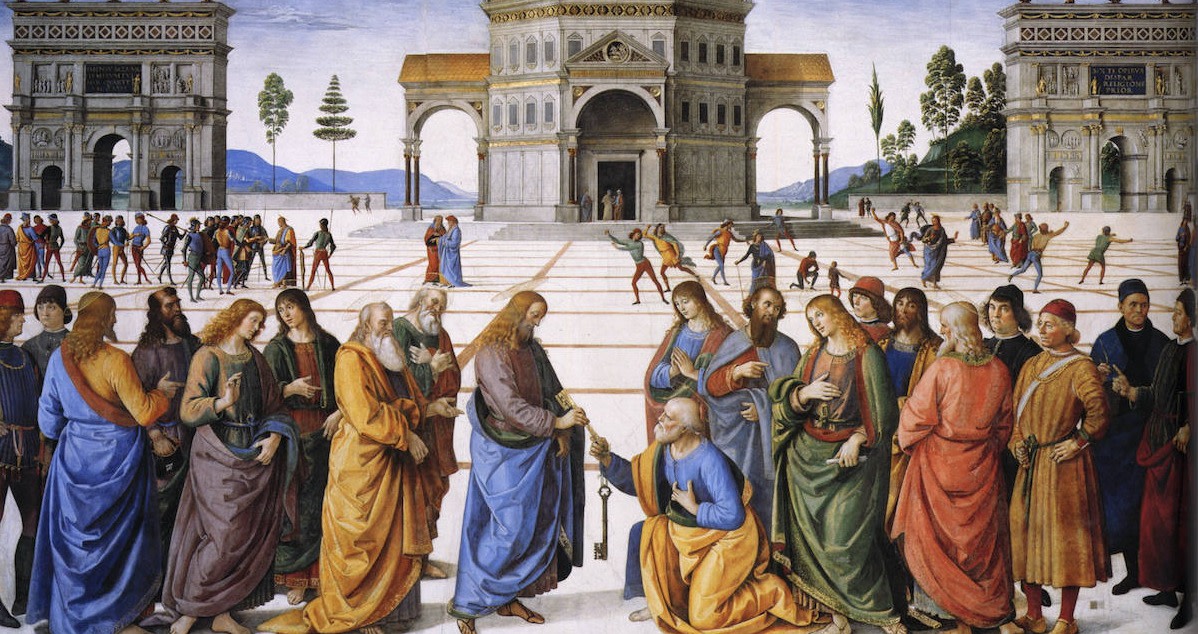Perugino: A Guide to Perugino’s Life and Paintings
Written by MasterClass
Last updated: Jun 7, 2021 • 4 min read
The Italian Renaissance was a period in Italian history in which economics, art, philosophy, technology, and exploration flourished. Pietro Perugino is a well-known Renaissance painter whose style was typical of later High Renaissance work.
Learn From the Best
Who Was Perugino?
Pietro Perugino, born Pietro di Cristoforo Vannucci, was an Italian Renaissance painter in the late fifteenth century and early sixteenth century. His work gave rise to two key techniques—the use of a central focal point and a seemingly infinite landscape—that became typical of the High Renaissance painters that succeeded him, including Michelangelo, Raphael, and Leonardo da Vinci. Aside from his artistic works, Perugino is also known for teaching painter and architect Raphael, who joined his workshop in Perugia around 1495.
Over the course of his career, Pietro Perugino painted over 175 works, the most well-known of which is Delivery of the Keys (c. 1481), a large-scale fresco that depicts Jesus Christ giving the keys of the kingdom of heaven to a kneeling St. Peter.
A Brief Overview of Perugino’s Life
Many of the details of Pietro Perugino’s life are up for debate, but there are a few key points that historians agree upon:
- Early life: Pietro Perugino was born Pietro di Cristoforo Vannucci in Città della Pieve, Umbria, around the late 1440s or early 1450s. He began studying painting at a young age, most likely under painters Fiorenzo di Lorenzo, Piero della Francesca, and Andrea del Verrocchio (alongside contemporaries including Domenico Ghirlandaio and Leonardo da Vinci).
- Early success: In 1480, Pietro Vannucci began to accept work in Rome and Florence, whereas an Umbrian, he received the nickname “Perugino,” or “man from Perugia” (then the largest city in Umbria). He (along with his friend and fellow painter Pinturicchio) painted several frescoes in the Sistine Chapel for Pope Sixtus IV, including The Baptism of Christ, Moses and Zipporah, and his most famous work, Delivery of the Keys. He also took pupils during this time, including a young Raphael.
- Later decline: Although Perugino continued to accept work from various people—including portraits and fresco paintings—his later work began to decline in popularity. Many people believed that he was copying his previously successful techniques and was no longer inspired to produce new or exciting compositions. A notable example of his diminishing popularity occurred in the early 1500s when Perugino was replaced by his pupil Raphael for a hefty commission at the Incendio del Borgo in the Vatican.
- Death and legacy: Perugino died in Fontignano in 1523 after contracting the bubonic plague. Though he died in relative poverty with his work viewed as generally unimpressive by the public, several of his painting techniques became benchmarks of the burgeoning artistic movement in Italy, the High Renaissance, led by his former pupil, Raphael. Perugino’s work can now be seen worldwide—including the Sistine Chapel at the Vatican, the National Gallery, the Musée des Beaux-Arts in Caen, and the Louvre.
Perugino’s 7 Most Famous Works
Here are a few of Perugino’s most well-known works:
- 1. Saint Sebastian (1478): This painting is Perugino’s earliest known work, depicting an early Christian saint that Perugino would return to throughout his painting career. Only a fragment of this fresco remains—the figures of Saint Roch and Saint Peter are barely visible on either side of Saint Sebastian.
- 2. Delivery of the Keys (c. 1481): By far, Perugino’s most famous and influential work, Delivery of the Keys, features two key techniques that later High Renaissance painters would use in almost every work—a central focal point and a seemingly infinite background. The careful, focused perspective and shrinking landscape were unique to Perugino at the time; contemporary painters like Sandro Botticelli were creating works that were much busier and did not feature a far-reaching landscape.
- 3. Pietà (1483–1493): Perugino’s pietà (a term to describe a work of art featuring the Virgin Mary and Christ) includes a strong central focal point in the body of Christ balanced rigidly between the characters in the foreground, including the Madonna, Mary Magdalene, and John the Evangelist.
- 4. Madonna with Child Enthroned between Saints John the Baptist and Sebastian (1493): This painting features the Virgin Mary in a pyramidal composition with two saints by her side. The artwork includes a sliver of landscape (typical of many of Perugino’s paintings), receding hills, and slender trees.
- 5. Adoration of the Magi (1496–1498): In this painting, Perugino depicts the Magi coming to visit the Virgin and child, accompanied by a colorful crowd of attendants. Adoration is one of the most extensive landscapes that Perugino is known to have painted.
- 6. Self-portrait (1497–1500): Perugino worked on many commissions for several customers and painted many portraits for wealthy members of society. However, his most famous portrait is a self-portrait that he completed around 1500 to commemorate his fresco work in the Collegio del Cambio.
- 7. Annunziata Altarpiece (1504–1507): One of Perugino’s later works, the Annunziata Altarpiece, was painted for the Basilica dell’Annunziata, a church in Florence. The work was severely criticized for its lack of innovation, perhaps due to Perugino’s reuse of particular figures from his other paintings when creating the Annunziata Altarpiece.
Ready to Tap Into Your Artistic Abilities?
Grab the MasterClass Annual Membership and plumb the depths of your creativity with the help of modern artist Jeff Koons, abstract artist Futura, and stage designer Es Devlin. Our exclusive video lessons will teach you to do things like utilize color and scale, explore the beauty in everyday objects, and so much more.
